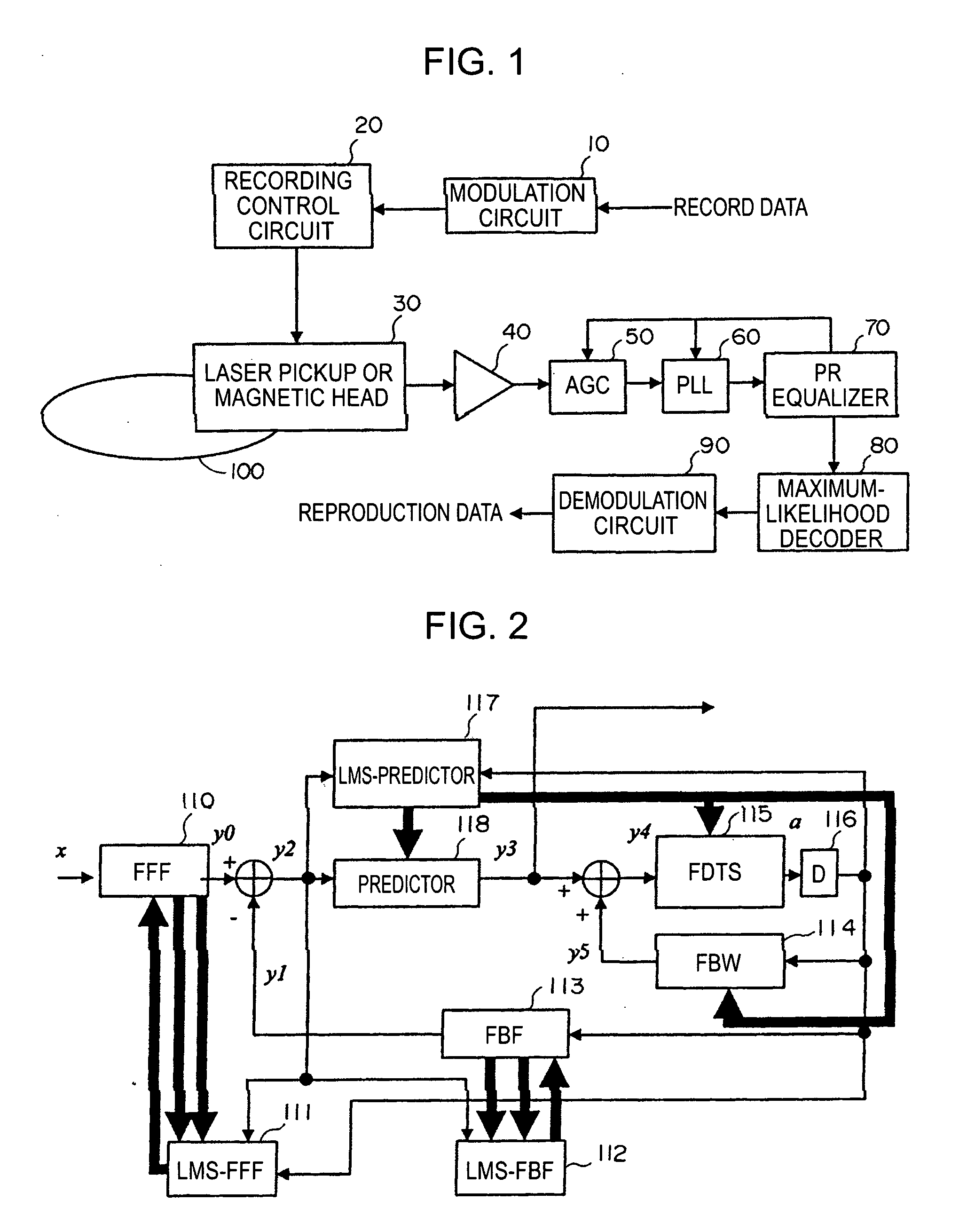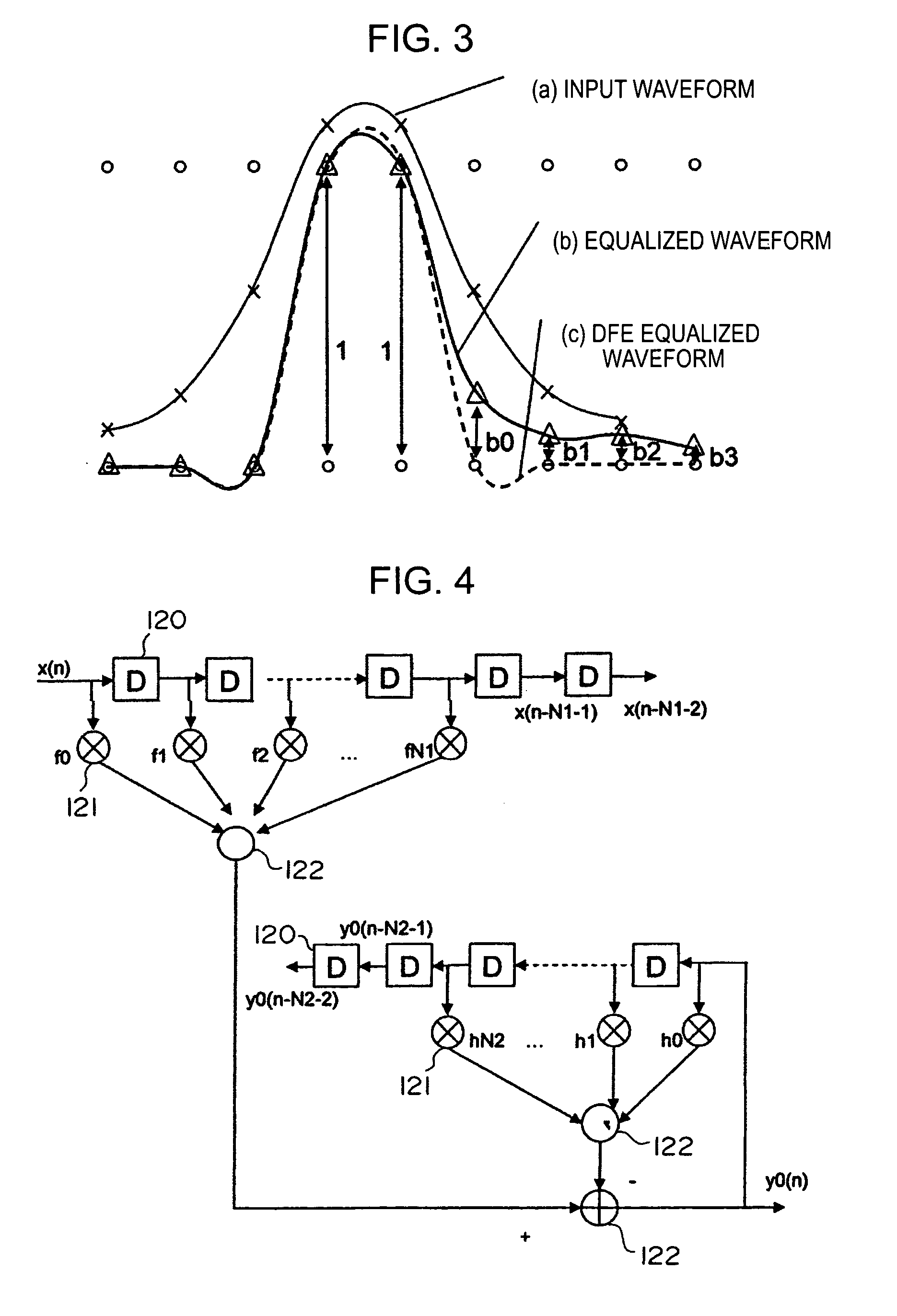Adaptive equalizer, decoding device, and error detecting device
- Summary
- Abstract
- Description
- Claims
- Application Information
AI Technical Summary
Benefits of technology
Problems solved by technology
Method used
Image
Examples
Embodiment Construction
[0043] According to an embodiment of the present invention, in a waveform equalizer for a communication apparatus, a magnetic recording apparatus, or an optical recording / reproducing apparatus, a feed-forward filter (FFF) is provided and, at a subsequent stage, a decision feedback equalizer (DFE) or a fixed delay tree search / decision feedback equalizer (FDTS / DFE) employing FDTS for a determination unit is provided. Partial response (PR) is performed on only a first portion of inter-symbol interference (ISI) of a waveform equalized by the FFF and equalization that does not consider subsequent response (herein after referred to as “trailing-edge ISI”) is performed. A feed-back filter (FBF) generates a response for the trailing-edge ISI and the DFE structure subtracts the generated response from a response provided by the FFF so that a result becomes a partial response.
[0044] An embodiment of the present invention will now be described with reference to the accompanying drawings.
[004...
PUM
 Login to View More
Login to View More Abstract
Description
Claims
Application Information
 Login to View More
Login to View More - R&D
- Intellectual Property
- Life Sciences
- Materials
- Tech Scout
- Unparalleled Data Quality
- Higher Quality Content
- 60% Fewer Hallucinations
Browse by: Latest US Patents, China's latest patents, Technical Efficacy Thesaurus, Application Domain, Technology Topic, Popular Technical Reports.
© 2025 PatSnap. All rights reserved.Legal|Privacy policy|Modern Slavery Act Transparency Statement|Sitemap|About US| Contact US: help@patsnap.com



